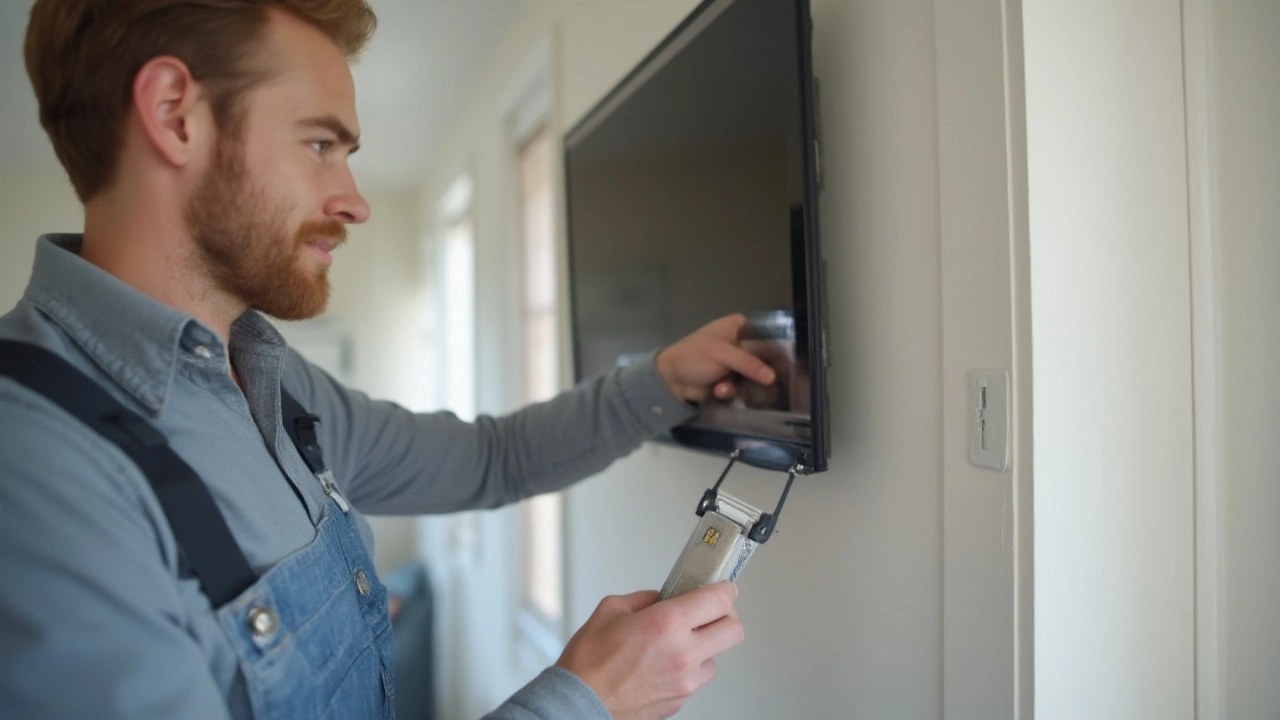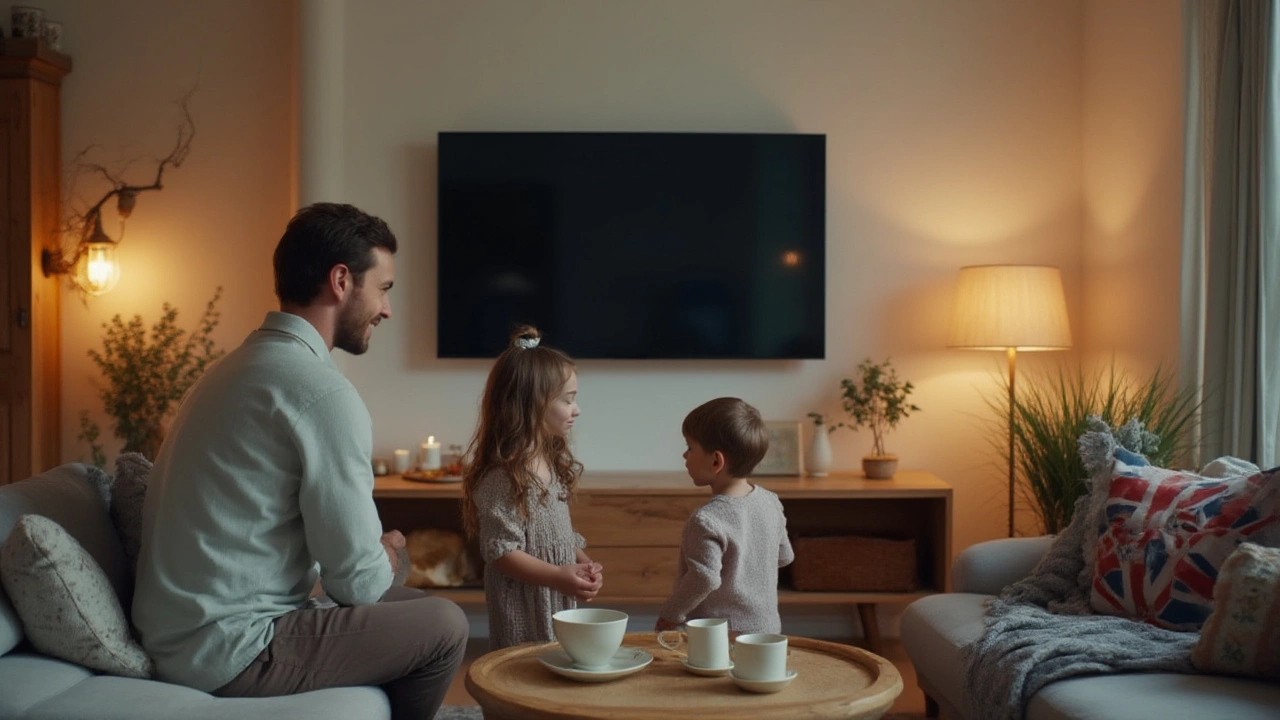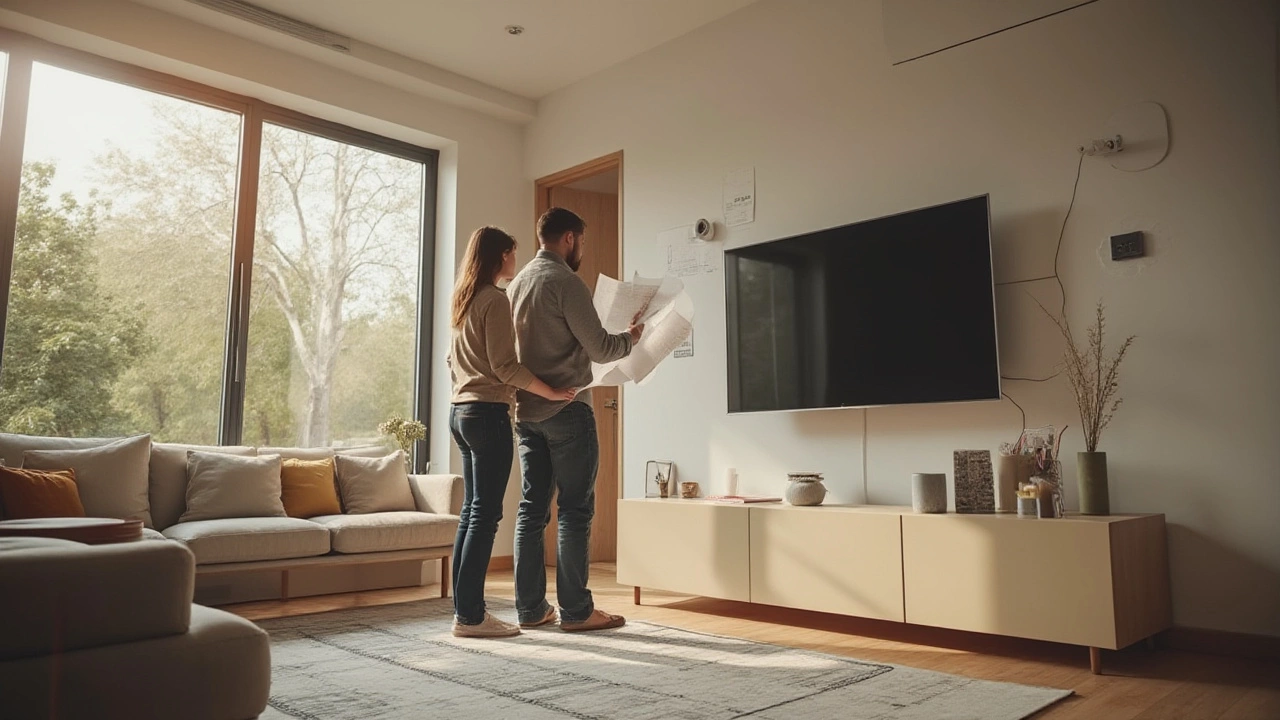You just moved into your brand-new dream home, and the first thing you picture is settling into a movie night with your family. That giant flat-panel TV is practically begging for the perfect spot on your wall—but should you really be drilling into your nice, flawless drywall? Is it even a good idea to mount your TV in a new build, or are you risking costly mistakes you’ll regret before the popcorn’s even popped?
New builds often look pristine, but when it comes to mounting things on the wall, there’s more than meets the eye. Not every wall is ready to hold that heavy screen, even if everything looks smooth and solid. And believe it or not, a surprising number of UK homeowners find out the hard way that just because a house is ‘new’ doesn’t mean it’s built like a tank—or that wiring and hidden systems were mapped with DIY folks in mind. Digging into the details is the only way to avoid an expensive mistake or, worse, turn your TV into a modern art installation on the living room floor.
Understanding Your New Build’s Walls: What’s Behind the Plaster?
Let’s be honest, enjoying a gorgeous new house makes it tempting to start hanging and mounting things anywhere you please, but walls in new builds have their quirks. In the UK, most new homes built after 2010 use timber stud partitions for interior, non-load-bearing walls. Unlike solid brick or block, timber-stud walls feature wooden ‘studs’ spaced 400mm to 600mm apart, with plasterboard screwed on top. All this means your TV wall mounting plans depend a lot on finding those studs.
The first thing to remember: plasterboard alone will not hold a decent-sized screen—no matter how many fancy fixings you use. As a rule of thumb, anything above 32 inches or weighing more than 10kg (22 lbs) absolutely needs to anchor into the studs. Manufacturers like Samsung and LG warn in their guides that wall-mounting into just drywall (plasterboard) invites disaster, and insurance rarely covers TVs that fall due to bad installs.
Even internal walls between rooms might not be what you expect. Some may be ‘dot and dab’ construction—where plasterboard is glued to masonry—which is a little more forgiving but still not as solid as a good old brick wall. For exterior walls, you’ll mostly find cavity block construction with plasterboard lining—stronger, but usually requiring special fixings or longer screws if you’re aiming for a neat-to-the-wall setup. Builders rarely use solid brick anymore for anything other than structural purposes, so don’t assume you’re working with a bulletproof surface.
Before you do anything, grab a reliable stud finder. Modern ones can even detect pipes and cables, and you’d be surprised how many homeowners end up drilling through an electrical wire—something the NHBC, the UK’s building standard watchdog, gets regular complaints about. If unsure, check the builder’s plans or ask your site manager; most are keen to help keep you from making mistakes that turn into warranty claims.

Planning Your TV Wall Mount: The Rules, Risks, and Realities
There’s good news: yes, you can mount your TV on the wall in a new build. The catch? It takes a little homework to do it safely and avoid damage that could cost you more than the TV itself. Start by deciding exactly where you want the TV. Make sure there’s a power outlet nearby (don’t rely on extension leads, they’re hazardous in permanent setups). Figure out how you’ll route cables—for smart TVs especially, you’ll want neat paths for HDMI, Ethernet, and perhaps aerial, without ugly wires trailing everywhere.
Next up, dig into the details of your wall. Find those studs with your stud finder—a magnet-based one can work, but the electronic types are more accurate, and some even light up or beep when you find both the stud and lurking danger like a copper pipe. Once you’ve found solid wood, measure twice before drilling. Standard VESA mount brackets work with most modern TVs and usually need at least two or four screws in firm timber for safety. Always use screws at least 50mm long (that’s about 2 inches) if you’re going into timber studs. If your wall is ‘dot and dab,’ special wall anchors designed for hollow spaces are a must—they grip both the drywall and the brick/block behind.
What if you don’t hit a stud where you want the TV? Bring in a steel or plywood mounting board. Secure that to the studs first, then attach the TV bracket to the board. It won’t look out of place once you hang the TV, and it spreads the weight over multiple studs, making for a much safer solution. Some pros swear by this trick—especially for wider TVs or articulated mounts that move away from the wall. No stud? Don’t even think about mounting anything heavy there. For lighter TVs and smaller displays, you might risk a super-strong toggle or spring anchor, but it’s never a guarantee.
Don’t forget to check your home warranty. New homes usually come with a 10-year NHBC Buildmark warranty, or a similar scheme. If you damage plumbing, wiring, or even just the vapour barrier behind the wall, your warranty might not cover it. Always double-check with your builder: some developments have explicit rules against wall-mounting anything in the first two years, while others will simply want you to take care. If you’re ever in doubt, call a professional installer. The £80 to £150 you’ll pay could save you from a repair bill several times that if something goes wrong.
Here’s a quick breakdown of common wall types and TV mount solutions:
| Wall Type | Safe Mounting Method | Typical Fixings |
|---|---|---|
| Timber Stud | Screw TV bracket directly into studs | Wood screws (50mm+), plywood mounting plate |
| Dot & Dab | Heavy-duty wall anchors, or reach blocks behind plasterboard | Hollow wall anchors, frame fixings |
| Brick/Cavity Wall | Wall plugs and masonry screws | Masonry bolts, suitable wall plugs |
Quick tip: Always keep a snapshot of any wiring or pipe layout in your walls. Many new builds give you this in your welcome pack. If not, use a stud finder app on your smartphone (they work surprisingly well for a freebie) or just ask your builder for schematics.

Tips, Tricks, and Mistakes to Avoid When Wall Mounting a TV in a New Build
Here’s where the difference between a storybook living room and a thousand-pound headache happens. Even if you’ve read every instruction, people still make rookie errors that cost them dearly. Keep these practical steps and clever hacks in mind:
- Start by checking your lease or purchase agreement. Some new builds—especially flats or shared buildings—prohibit drilling into external walls, or even internal ones, during the defect liability period (usually 12-24 months). Breaking these rules can void warranties or insurance.
- Always map your wall for electrical wires and plumbing. Roughly 7% of British homeowners drill into something they really, really shouldn’t each year, according to a 2023 Homeowner’s Safety Survey. That’s thousands of unexpected repair bills, outages, or even fires.
- Measure your viewing height: eye level from your favorite seat is ideal. The most common mounting regret is putting the TV too high—neck ache is not a vibe for movie night. The center of the TV should be about 110cm (43 inches) off the floor for standard sofas.
- Don’t just screw into plasterboard. Even the best anchor fixings can pull out over time, especially with larger TVs. Always anchor into timber studs or use professional mounts designed for hollow spaces.
- If hiding cables, use “cable management” trunking or ask your builder about running wires behind the plasterboard. Never cut into vapor barriers or insulation without knowing the risks—doing so can wreck your home’s energy rating and create condensation problems.
- For rental new builds, freestanding TV stands that mimic a wall-mount look are a trend in 2025. They create a floating feel without a single hole, keeping both landlords and tenants happy, and you can even roll them to a new spot if you change your mind.
- Don’t ignore your TV’s instructions. Most brands list min/max screw lengths and compatible mounts in user manuals. If you use screws too long, you can pop right out the back of your screen—yes, it happens, and it’s soul-destroying.
- If your build has underfloor heating, remember that many power and signal cables run vertically from floor level. Never drill within 15cm of electrical sockets or switches—stats show most hidden wires run directly above or below these points.
- If your TV hangs over a fireplace, make sure the wall isn’t too hot. Heating damage voids most TV manufacturer warranties. Use a digital thermometer before you drill—and never mount above a gas fire.
- Use a spirit level (or a level app) to keep things perfectly straight, and mark your holes before you drill. Hundreds of lopsided TVs are hung every month because someone ‘eyeballed’ it—don’t join the club.
Loads of new builds are actually designed with a TV wall in mind, especially in open-plan living spaces. Some even come with dedicated ‘media wall’ recesses or hidden cable runs. When buying a new place, it’s a great time to ask the builder if you can pre-arrange for extra supports, electrical sockets, or even recessed cabling. A ‘future proofed’ TV wall can save a whole lot of drilling, fussing, and re-decorating down the line.
So, should you mount your TV on the wall in your new build? With a mix of patience, planning, and maybe a little help from a professional, you absolutely can have that sleek, clutter-free look. The key is not to rush it or cut corners—those smooth, pristine walls might look inviting, but a little careful prep goes a long way. Trust me, there are few things as satisfying as sitting back, remote in hand, knowing your TV’s secure and your walls are still as flawless as the day you moved in.

Author
Damon Blackwood
I'm a seasoned consultant in the services industry, focusing primarily on project management and operational efficiency. I have a passion for writing about construction trends, exploring innovative techniques, and the impact of technology on traditional building practices. My work involves collaborating with construction firms to optimize their operations, ensuring they meet the industry's evolving demands. Through my writing, I aim to educate and inspire professionals in the construction field, sharing valuable insights and practical advice to enhance their projects.